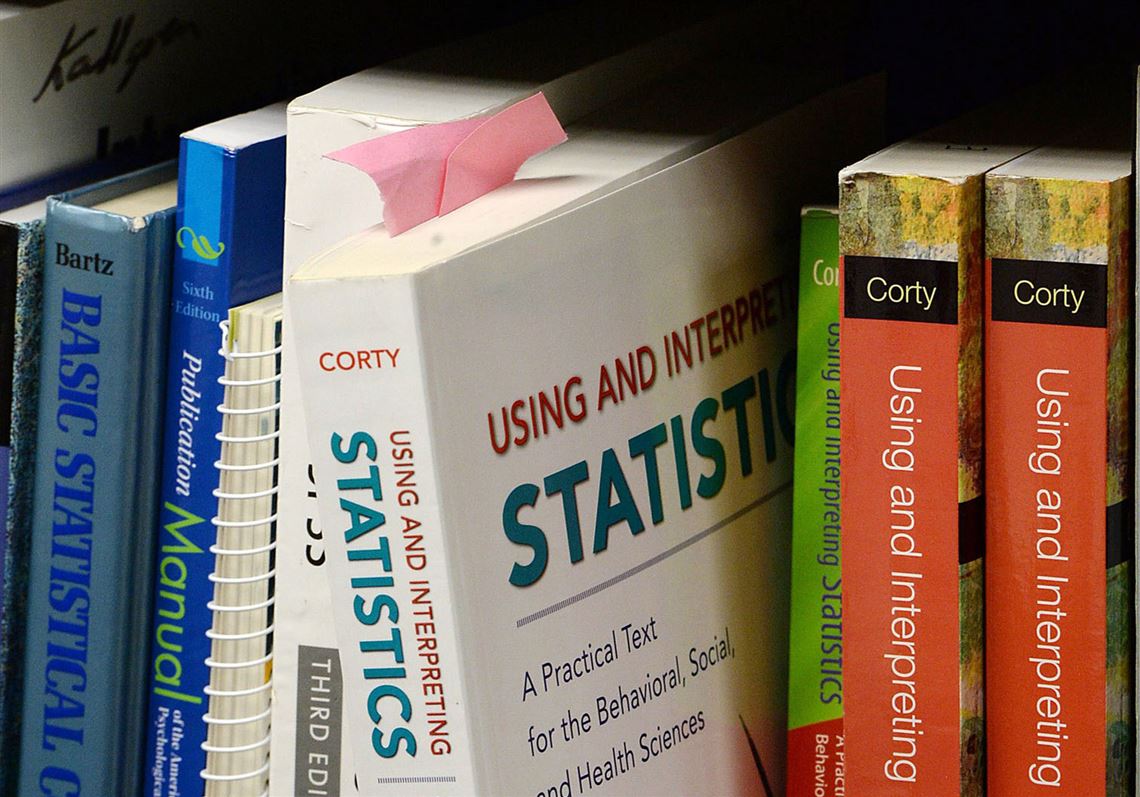Penn State students can now easily navigate course options with little or no cost as textbook prices skyrocket and a majority of students worry about course material costs.
LionPATH, the university’s student information system, will designate whether a course section’s required texts are free, low-cost or under $50. The new search option aims to bolster Penn State’s “access and affordability goals,” said Ann Taylor, an assistant dean in the university’s College of Earth and Mineral Sciences.
The cost indicator brings “optimism and hope” to Nora O'Toole, Penn State’s student body president. Ms. O'Toole told the Post-Gazette she has already used the cost marker to schedule her spring semester classes.
“It’s great not only for our generation, but for generations to come who are looking for affordable education,” said Ms. O’Toole, a senior studying cybersecurity analytics and operations.
The new LionPATH option comes as four out of five Pennsylvania college students worry about meeting course material costs to some extent, according to a recent survey of over 4,300 college students at 14 Pennsylvania institutions.
Over half of the surveyed students said their worry is “moderate” or “extreme,” reported the survey, which was conducted by Affordable Learning PA and published this month. Pell Grant recipients and those with full-time, off-campus jobs were among those particularly impacted, the survey found.
Pennsylvania students’ worry levels are higher than the national average, noted Julia Seaman, the co-lead researcher behind the survey.
“Students are worried about their course material costs everywhere, but we found Pennsylvania students are more worried and have a lower proportion of their costs covered by financial aid,” Ms. Seaman said in a news release. “These differences highlight the importance of research at the state and even individual institutional level.”
Textbook costs often fluctuate based on a student’s major and schedule. On average, materials for four classes cost $360 in Pennsylvania, the survey found.
Almost half of the Pennsylvania students surveyed said they spent at least $200 on course materials each semester, and just 20% of students said a semester’s worth of course materials cost under $100.
And nearly all of the surveyed students try to reduce course costs in some way. Students reported buying used copies, looking for free materials online, and sharing materials with classmates to avoid premium prices.
Sydney Greenway, a University of Pittsburgh junior studying urban planning and geographic analysis, estimated that she spends around $100 on class materials each semester. She knows STEM majors who spend upward of $500 on their semesterly courses.
Ms. Greenway, who transferred to Pitt this fall after spending two years at Wayne State University in Detroit, said textbook cost stress is common on both campuses.
“Everyone that I talk to on campus is stressed about book costs and stressed about how they can possibly get the cheapest option,” Ms. Greenway said. “I've heard students in the bookstore on a call with their parents trying to figure out how they can afford a book [and whether] they can share it with classmates.”
The average college textbook costs around $105, according to Education Data Initiative, though hardcover book prices can be as high as $400. The price of textbooks has risen roughly three times the rate of inflation.
At Wayne State, Ms. Greenway organized a textbook affordability campaign through Student PIRGs that worked with Wayne State’s provost to bolster campus usage of open educational resources — materials available to students free of charge. The campaign also sought to increase faculty awareness of students’ financial constraints.
Ms. Greenway would like to head up a similar campaign at Pitt. She’d also like universities to acknowledge that textbook costs have skyrocketed — and so has the weight of those prices on students. The Affordable Learning PA survey found that two-fifths of respondents attributed course costs to earning a poor grade at some point. Costs prevented a third from registering for a course.
“Students should not be set back because they can't afford the textbooks in their class,” Ms. Greenway said. “...It’s important for colleges to be proactive in fighting for their students and [students’] financial health.
“We’re working minimum wage jobs. We don’t have hundreds of dollars to shell out for a book.”
First Published: November 24, 2023, 10:30 a.m.
Updated: November 24, 2023, 11:59 p.m.

















